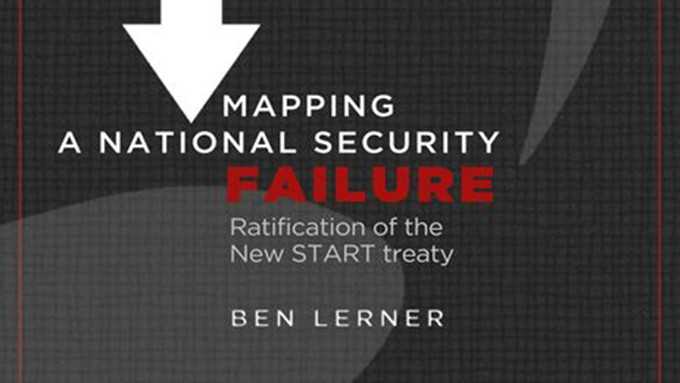Mapping a National Security Failure: Ratification of the New START Treaty

A key ingredient in the formulation that New START could help bring about a world without nuclear weapons was the notion that the United States could maintain credibility in calling for Iranian and North Korean cessation of nuclear activities only if the United States demonstrated willingness to downgrade its own nuclear deterrence capabilities. Senator John Kerry (D-Massachusetts), Chairman of the Senate Foreign Relations Committee, framed it this way:
The cuts in New START thus help prevent the spread of nuclear weapons by demonstrating America’s commitment to our [Nuclear Non-Proliferation Treaty] obligations and encouraging the cooperation of non-nuclear states… If we reject [New START], however, the United States would lose credibility, Iran would be better able to cast the United States as a source of international instability, and other nations would question our intentions. After all, what, they would ask, do we really need all these nuclear weapons for?[15]
Some supporters of the New START treaty voiced skepticism, however, as to the tactical wisdom of explicitly tying New START to a vision of a nuclear-free world. Sen. Richard Lugar (R-Indiana), Ranking Member of the Senate Foreign Relations Committee and an early supporter of ratification, commented:
I don’t fault… President Obama for talking about a world without nuclear weapons, but neither do I think it is a particularly good idea to express the process in that way… talk of ‘no nukes’ also invites opposition from those who see it as a sign of weakness in those who lack the backbone to face the world as it is. I don’t think that criticism is fair, but it’s out there.[16]
Clearly, the Russian “reset” and the President’s decision to actualize the Global Zero vision of a “world without nuclear weapons” were driving forces in the administration’s insistence on New START ratification. But they only take us part of the way in understanding how the ratification process unfolded and why proponents of New START were ultimately successful. For a fuller understanding, an analysis both of the substantive arguments advanced in favor of the treaty, and how those arguments both informed and were enabled by the ratification process, is necessary.
The Questionable Core Premise of New START
In its essentials, the New START treaty commits the United States and Russia to a limit of 1,550 deployed strategic nuclear warheads each, and to a limit of 700 deployed ICBMs, deployed SLBMs, and deployed heavy bombers equipped to carry nuclear armaments.[17] New START was designed to replace the original 1991 Strategic Arms Reduction Treaty (START), which expired on 5 December, 2009, and to supersede the 2002 Strategic Offensive Reductions Treaty, or SORT (also referred to as the Moscow Treaty), which was due to remain in force until the end of 2012.[18] New START is to remain in force for ten years, and, like its START predecessor, provides for a monitoring and verification regime.[19]
- Trump’s Election Was a Win in the Fight to Keep Gitmo Open - January 4, 2017
- NDAA and the Counter-Drone Challenge - December 23, 2016
- NDAA Takes On Counter-Drone Challenge - December 8, 2016
